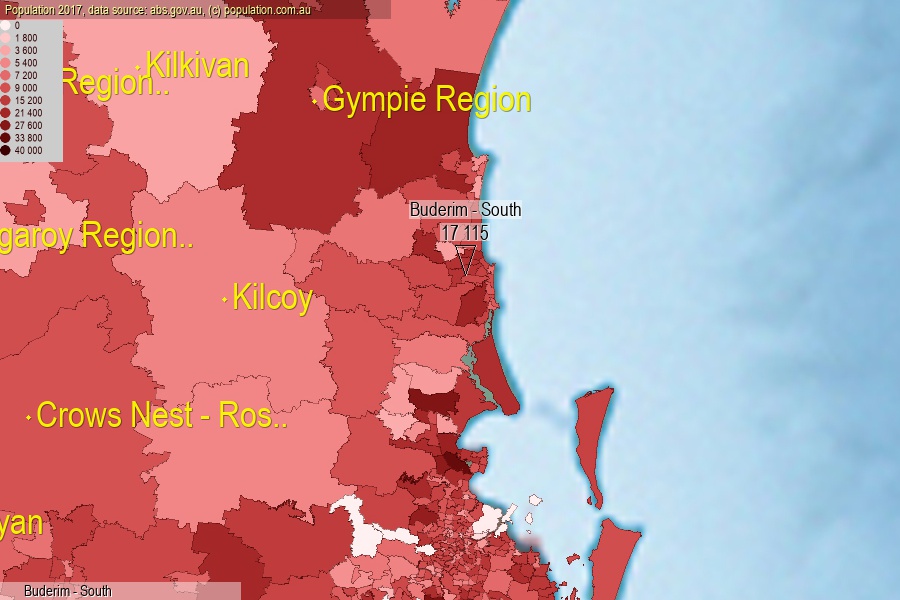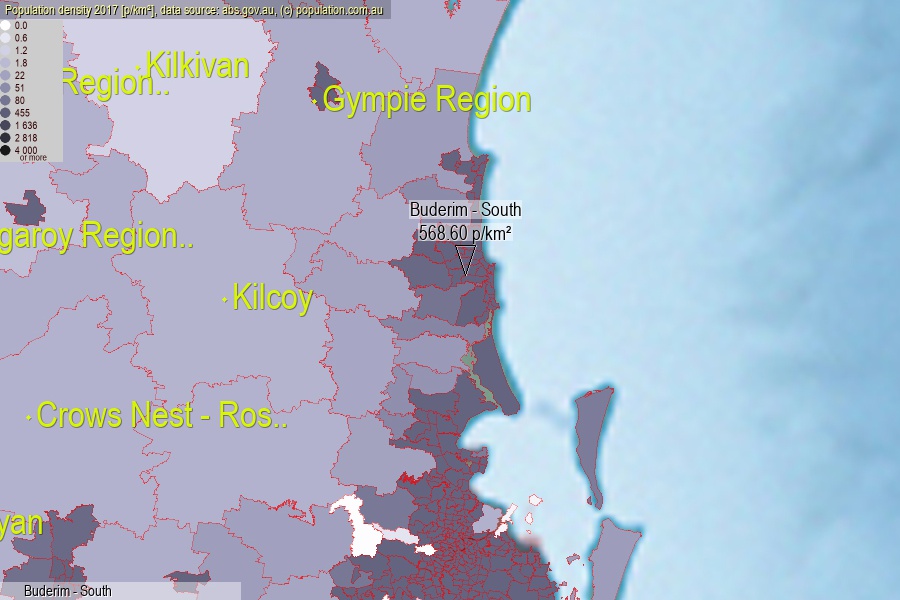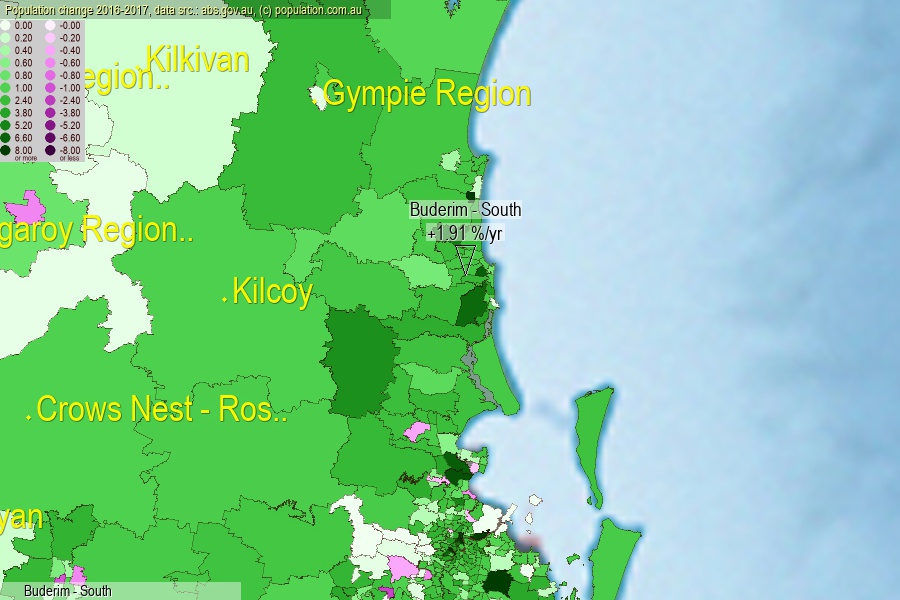 population.com.au
population.com.auLast official estimated population of Buderim - South (as Statistical Area Level 2) was 17 115 people (on 2017-06-30)[2]. This was 0.07% of total Australian population and 0.343% of QLD population. Area of Buderim - South is 30.10 km², in this year population density was 568.60 p/km² . If population growth rate would be same as in period 2016-2017 (+1.91%/yr), Buderim - South population in 2025 would be 19 914. [0]



Click to enlarge. Buderim - South is located in the center of the images.
Population [people], population density [p./km²] and population change [%/year] [2]
View borders » (new window) [4]
[1991-1992] +21.46 %/Yr.
[1992-1993] +22.65 %/Yr.
[1993-1994] +19.84 %/Yr.
[1994-1995] +11.14 %/Yr.
[1995-1996] +5.17 %/Yr.
[1996-1997] +3.78 %/Yr.
[1997-1998] +5.50 %/Yr.
[1998-1999] +3.72 %/Yr.
[1999-2000] +3.83 %/Yr.
[2000-2001] +3.63 %/Yr.
[2001-2002] +5.76 %/Yr.
[2002-2003] +5.00 %/Yr.
[2003-2004] +4.94 %/Yr.
[2004-2005] +2.61 %/Yr.
[2005-2006] +2.94 %/Yr.
[2006-2007] +1.85 %/Yr.
[2007-2008] +2.42 %/Yr.
[2008-2009] +1.60 %/Yr.
[2009-2010] +1.65 %/Yr.
[2010-2011] +1.11 %/Yr.
[2011-2012] +2.81 %/Yr.
[2012-2013] +2.56 %/Yr.
[2013-2014] +1.95 %/Yr.
[2014-2015] +2.82 %/Yr.
[2015-2016] +1.90 %/Yr.
[2016-2017] +1.91 %/Yr.
[0] Calculated with linear interpolation from officially estimated population
[1] Read more about SA2 and Australian Statistical Geography Standard (ASGS) on abs.gov.au
[2] Population data from Australian Bureau of Statistics (Population and density: 2017; change: 2016-2017)
[3] Digital Boundaries: Australian Statistical Geography Standard (ASGS) 2016.
[4] Border coordinates are simplifyed using Ramer-Douglas-Peucker algorithm.